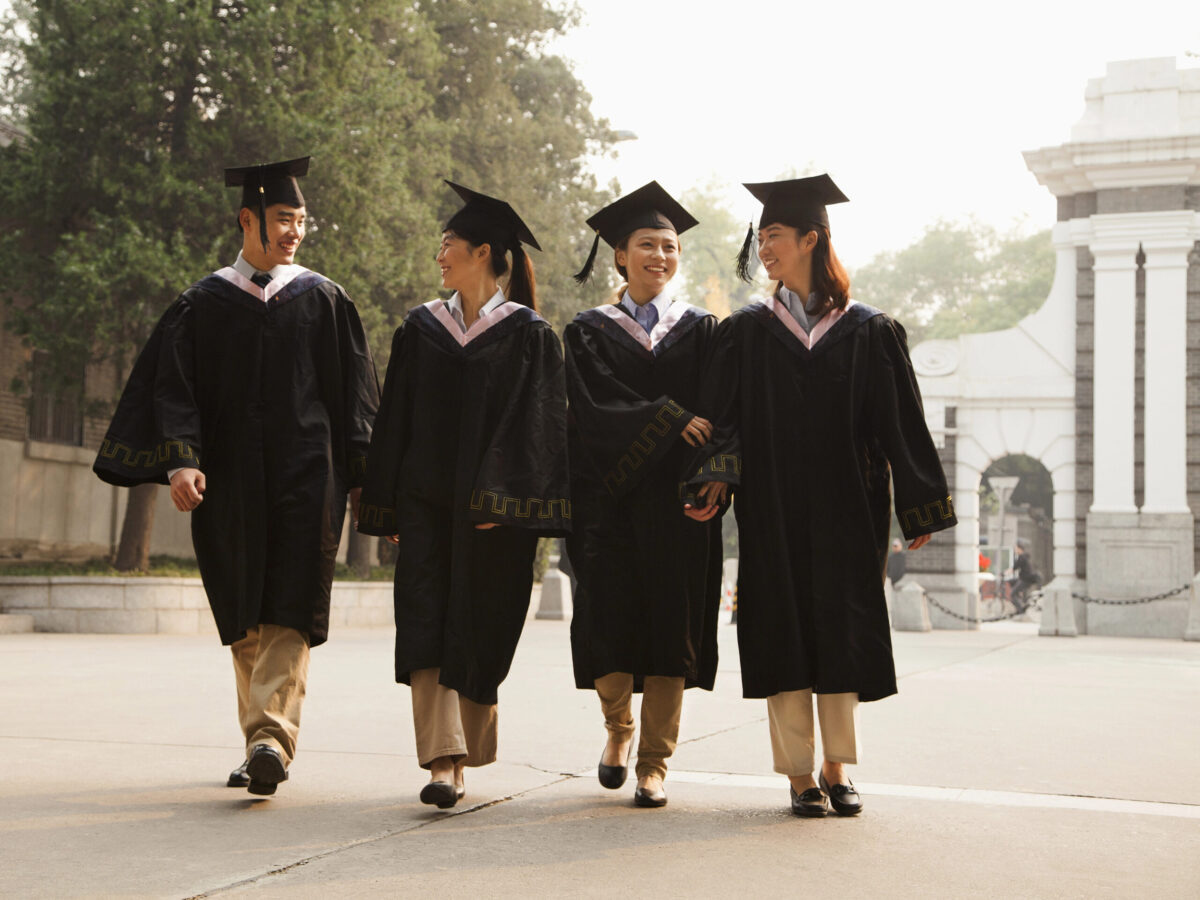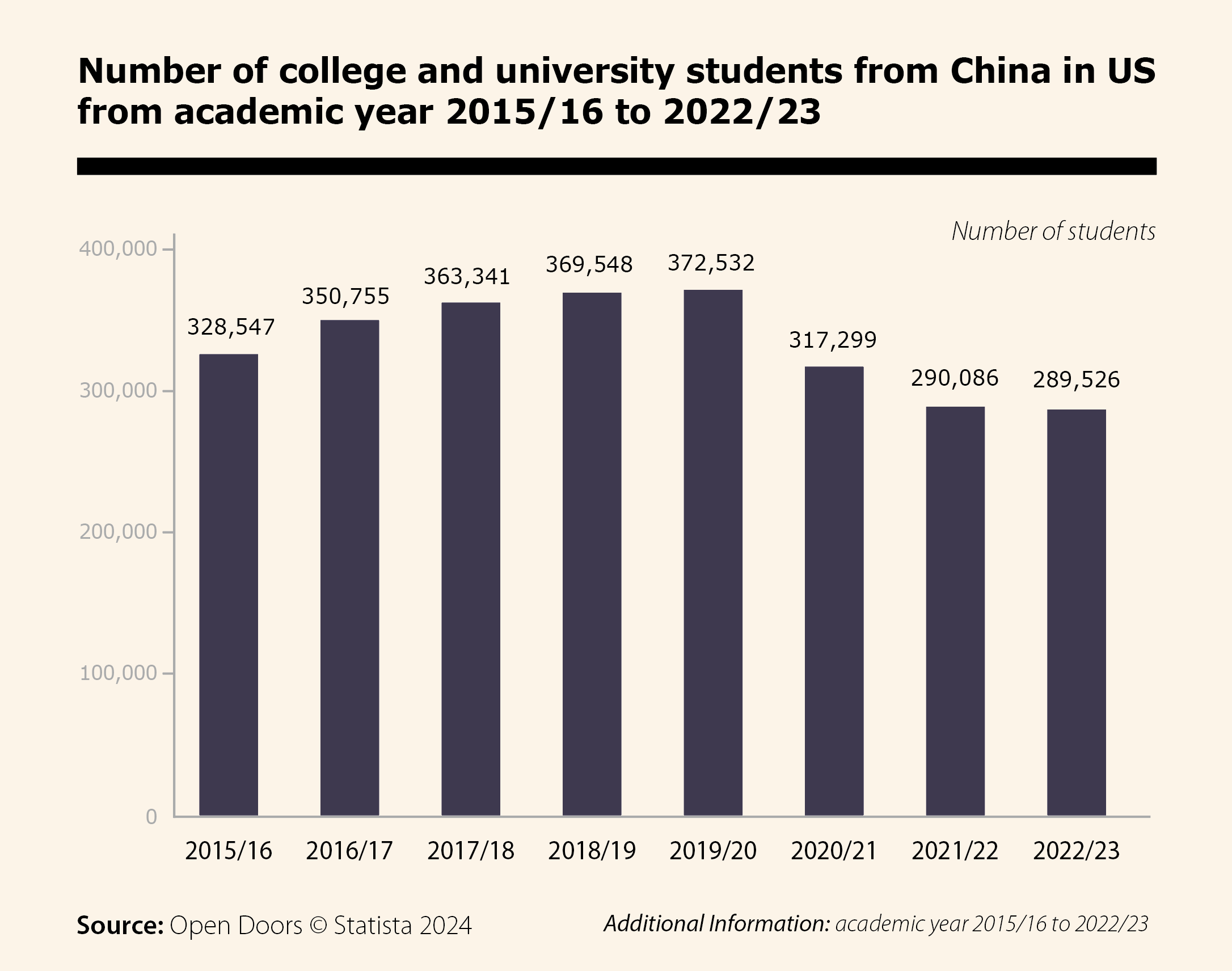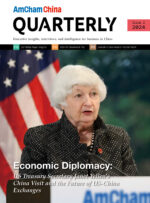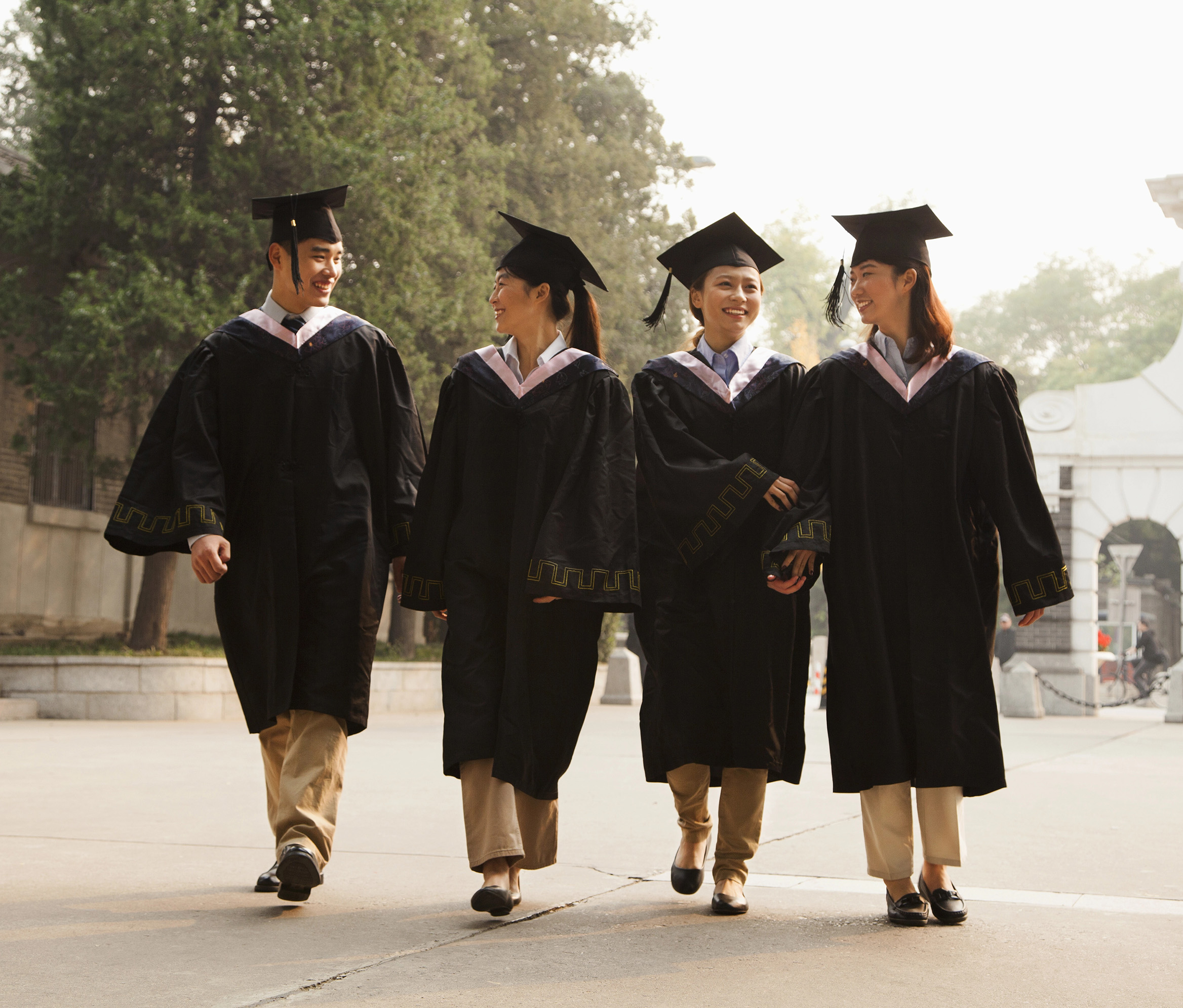Rebuilding Connections: US-China Education Exchange in a Post-Pandemic World
By Norris Tangen
Since the COVID-19 pandemic, the landscape of higher education exchange between the US and China has undergone sizeable shifts. This feature delves into the current state of student exchange between the two nations and the profound need for educational and cultural exchanges in both countries. With insights into recent trends coupled with expert recommendations, the AmCham China Quarterly, informed by the 2024 American Business in China White Paper, explores how both countries can foster stronger academic ties, ensuring mutual cultural understanding and cooperation in a rapidly evolving global environment.

Depositphotos.com
As 2023 drew to a close and the final remnants of COVID-19 controls in China disappeared, sentiment in the American business community experienced an uptick. However, according to the 2024 AmCham China American Business Climate Survey Report, members still cited “Rising tension in the US-China relationship” as their top challenge for the fourth consecutive year. One area where this sentiment has had a significant impact is the exchange of higher education students between the two countries. With flagging numbers of American students studying in China and Chinese students studying in the US, the exchange of higher education students appears to be one casualty of the COVID era. The reasons behind the declining number of exchange students between the US and China is multifaceted, but it includes stiffer international competition in higher education, the mercurial US-China relationship, and perceptions of safety in both countries.
Chinese Students Look Abroad
According to a 2023 Open Door Report on International Education, the number of Chinese students studying in the US peaked during the 2019-2020 academic year with 372,532 students. After that, the dampening impact of COVID-19 is clear—the 2022-2023 school year, for instance, saw just 289,525 Chinese students studying in the US. Increasingly, more and more Chinese students are looking toward destinations in Europe and Southeast Asia for their studies. Additionally, more Chinese students are applying to many more institutions than in the past. The 2023 China Institute of College Admission Counseling agency conducted survey of 144 high schools found that less than one third of students applied to institutions in one country for the 2024 academic year, compared to 37% applying to two and 24% applying to three.
This shift is driven by several factors. European and Southeast Asian countries have actively marketed their educational institutions to Chinese students, offering competitive tuition fees, strong academic programs, and attractive post-graduation work opportunities. Additionally, the perception of a less welcoming environment in the US have also contributed to this trend.
Despite the decline in numbers, Chinese students still made a significant economic impact on the US, contributing approximately US $15 billion to the gross domestic product in 2022-2023.
American Students in China Decline
The number of American students studying in China has declined even more steeply. In the 2019-2020 academic year, the number of Americans enrolled in Chinese degree programs dropped to 2,481 from 11,639 the previous year. By 2021-2022, the number had plummeted to just 211, due to the China’s strict pandemic controls and geopolitical tensions. The US Embassy in China has reported a recent, modest increase in US students studying China—now at around 700.
However, there are signs of a modest recovery. In January 2023, the Chinese government lifted its entry quarantine policy, facilitating the arrival of US students and scholars in China. Additionally, the IIE Spring 2023 Snapshot on International Exchange noted that nearly all reporting US institutions have returned to or anticipate returning to in-person study abroad programs for the 2023-24 academic year.
Moreover, Chinese President Xi Jinping’s initiative to invite 50,000 young Americans to China over the next five years, announced in November 2022, is expected to boost exchanges and foster mutual understanding. This initiative aims to promote young Americans’ understanding of China’s socio-economic development.
A Tale of Two Students: An American Student in China
For Avery Jade Prewitt, a Tsinghua University student, studying in Beijing was transformative. Initially met with skepticism, she recalls: “When I informed my family and friends of my acceptance into Tsinghua University, they were genuinely concerned for my safety and well-being.” Despite challenges like adapting to a new language, post-COVID regulations, and visa requirements, she found the experience rewarding. “Studying in China has been my most challenging yet rewarding experience. As one of fewer than a thousand American students here, I’ve embraced the responsibility of being an ambassador for my country.”
Prewitt faced issues beyond language barriers, learning about US-China relations. “Despite the enriching experiences, I am aware of the complexities between my home country and China.” Ultimately, Prewitt feels her time in China was invaluable for personal growth and her professional trajectory. “Living and studying in China has immersed me in the culture, giving me a profound understanding of Chinese traditions, social norms, and daily life.” She adds, “My time in China has shaped my career aspirations, particularly my passion for research. I hope to bridge the gap between Western and Chinese academic discourse.”
A Chinese Student in the US
A Chinese student currently studying for his Master’s in the US shares his experiences studying in America. He describes his undergraduate years at Boston University as rigorous but fulfilling, marked by strong relationships with professors and peers. “The professors are very strong academically and friendly to students. During my undergraduate studies, I had a very good relationship with the professors, and they taught me a lot.”
However, Post-COVID, he faced loneliness and focused intensely on his studies. “The last year in Boston was quite depressing, but it also made me invest more energy in my studies. I achieved more academic results this year than in the first three years combined.”
Reflecting on his career aspirations and personal growth, he notes the broader perspective gained from studying abroad. “My study abroad life has allowed me to see a wider world, hear different voices, and understand various perspectives. This experience has made me more mature and resilient.”

The Crucial Role of Educational and Cultural Exchange
The exchange of students between the US and China holds immense value, beyond the economic contributions. Exchanges brings cultural diversity to campuses, foster mutual understanding, and sow the seeds for long-term cooperation between the two countries.
Despite the low numbers of US students in China, it is more important than ever for the next generation of Americans to develop not only Mandarin language skills, but also cultural understanding of China. Such understanding ensures that future American leaders can understand and appreciate the complexities of US-China relationship. Even if, and especially if, US-China relations were to deteriorate further, it would be crucial for the next generation of leaders to have a deep understanding of China to successfully steer the world’s largest and most complex bilateral relationship. The enhanced language skills, cultural competencies, and international networks that students gain through exchange programs are invaluable assets in a globalized world
Addressing Issues and Finding Solutions
The following suggestions are informed by recommendations from the 2024 American Business in China White Paper (White Paper) chapter on Education, which was drafted by AmCham China member company representative volunteers in the education industry, to address the decline in student exchanges. Several measures can be implemented:
- Streamline visa processes: Long waiting times for interview appointments and strict background checks at US Customs and Border Patrol entry points impact Chinese students’ motivation to study in the US. Simplifying and expediting these processes could encourage more students to apply.
- Enhance safety and support: Addressing the safety concerns of both US and Chinese students is essential. On the US side, this includes improving campus safety, promoting inclusivity, and providing robust support systems for international students. On the Chinese side, this means fostering a more welcoming domestic environment for American students
- Increase transportation options: Significantly increasing the frequency of flights between China and the US, particularly direct routes to additional cities, would make travel more accessible and affordable for students.
- Expand academic opportunities: Chinese universities could offer more courses taught in English, provide safe and adequate on-campus dormitories, and create more internship opportunities in collaboration with companies. Similarly, US universities should invest in language and cultural exchange programs to attract more American students to China.
Recommendations for the Future
Also from the 2024 White Paper, the following are recommendations for both the US and Chinese government to increase higher education exchange between the two nations:
For the Chinese Government:
- Simplify the approval process for work permits and work-related residence permits.
- Establish clear criteria for the import of foreign books for expatriate schools.
- Facilitate easier access to China’s digital and mobile services for expatriates.
For the US Government:
- Encourage American students to participate in exchange programs in China to cultivate mutual understanding.
- Provide clear guidance and support for Chinese students applying for F-1 visas to ease the process and reduce scrutiny.
Scholarly Collaborations: US-China Academic Exchanges and Partnerships
Both China and the US attach great importance to academic exchanges and interactions. Initiatives like the US-China High-Level Consultation on People-to-People Exchange and the China Scholarship Council’s funding for graduate students and scholars have facilitated significant academic collaborations.
Despite geopolitical and ideological differences, cooperation between US and Chinese scholars on global challenges such as climate change, energy security, and food security continues to deepen. Supporting these exchanges can promote scientific progress and global sustainability.
Fostering robust higher education exchanges between the US and China is essential for both nations. By addressing current challenges and implementing supportive measures, the two countries can strengthen their academic and cultural ties, ensuring a brighter future for international collaboration and understanding.
To get involved in AmCham China’s Education Committee, contact Melody Wen at mwen@amchamchina.org.

This article is from the AmCham China Quarterly Magazine (Issue 2, 2024). To access the entire publication for free, sign up on our member portal here.


